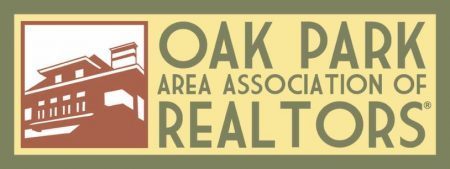Location: An expansive neighborhood, Austin shares its western border, Austin Boulevard, with suburban Oak Park. Cicero Avenue is the eastern border of Austin, stretching north from Roosevelt Road past the Eisenhower Expressway (I-290) to North Avenue. Located nine miles west of downtown Chicago with a population of 114,000, Austin on its own would rank as Illinois’ third largest city, after Chicago and Rockford. Austin is Chicago’s largest neighborhood in both geographical size and population.
Roughly split in half by Madison Street, Austin’s north section easily is distinguished by its large, single-family wood-frame homes. The south section of Austin is marked by neat rows of brick multi-unit buildings while mansions dating back to the mid-1800s dot Midway Park Street.
History: A century ago, Austin was a lovely 280 acre subdivision in Cicero Township, built on former farmland by businessman and real estate speculator Henry W. Austin. Austin planted elm trees throughout the neighborhood and fruit trees in the back yard of every home he built. During most of the 1800’s, the village of Austin was under the jurisdiction of Cicero Township. On April 4, 1889, Austin was annexed into the City of Chicago.
There is plenty of action in Austin, where determined residents and community groups are revitalizing the city’s largest neighborhood. Recently, Mayor Richard Daley was quoted as saying, “More than $310 million of public and private projects in Austin have been completed over the last five years or are about to begin. They are the result of a collaborative effort involving government, the private sector, the not-for-profit sector and neighborhood and community organizations.”
The Chicago Tribune Magazine agreed: “Austin has seen more redevelopment lately, especially since the Lake Street “L” reopened a few years ago. A giant vacant lot near Mayfield Avenue and Lake Street has been replaced with a row of new houses. More yuppies and buppies have moved into the Victorian homes and renovated them. A member of the mayor’s staff, a city department head and the local congressman all have bought rehabbed homes there recently.”
Architecture: Though dotted with Victorian homes, much of the neighborhood is dominated by bungalows and apartment buildings. Austin’s north section easily is distinguished by its large, single-family wood-frame homes. The south section of Austin is marked by neat rows of brick multi-unit buildings. Rentals are available in some of the neighborhoods. Most single-family homes and small apartment buildings are owner-occupied. Once they move in, people become committed to the neighborhood and do not move out soon.
Austin Village, bounded by Austin, Chicago, Washington and Central, is a neighborhood of historic homes. Listed on the National Register of Historic Places, the Austin Historic District is bounded by Waller Avenue, Ohio Street, Austin Boulevard, Corcoran Place, Menard, West End and Parkside Avenues.
Government: The City of Chicago is populated by almost three million people and has a mayor/council form of government. It is divided into fifty wards, each represented by an alderman. All fifty aldermen comprise the Chicago City Council. Through its government process of checks and balances, the Mayor and the City Council oversee all city-related issues. The term of office for the Mayor is four years; the term of office for an Alderman is also four years.
Austin is divided into two wards, the 29th and the 37th.
Education: In the 1920s, ’30s and ’40s, Austin High School was renowned as one of the better schools in the city. The Austin High Gang, including coronet player Jimmy McPartland, helped define Chicago jazz. Questions about specific schools can be addressed to Chicago Public Schools, Office of Information, Outreach and Ombudsman Services at 773-553-1000.
Private and parochial schools locally include the Learning Center Network, the Academy for Scholastic Achievement, Fenwick High School (a private Dominican Catholic college preparatory school in the nearby Village of Oak Park), and St. Ignatius College Prep.
Transportation: The CTA’s O’Hare-Congress-Douglas Line rapid transit trains serve the southern end of Austin. The CTA‘s Lake (Green) Line runs through the center of the neighborhood. There is CTA bus service on major streets. The Eisenhower Expressway (I290) runs through the south end of the Austin neighborhood.
Points of Interest: Austin Town Hall: The Austin Town Hall facility includes two basketball backboards, a playground and volleyball court. Inside, there are eight clubrooms, an auditorium, fitness center and gym, two kitchens and a natatorium.
Columbus Park was designed in 1912 by Jens Jensen, now known as dean of Prairie style landscape architecture. The park was built on 144 acres at the western boundary of Chicago and named after Christopher Columbus. Included in Columbus Park is a swimming pool, sports fields, a volleyball court, four basketball courts, six tennis courts, two outdoor playgrounds, two gyms and a fitness center, a bowling green, wading pool, spray pool, golf course, archery range, lagoon, field house, eleven club rooms, three kitchens, a game room and craft shop.
Library: The Austin Branch Library, is part of the Chicago Public Library’s Central District. The 15,035 square foot building, built in 1929, is owned by the library, has street parking and a meeting room that seats 150.
Park District: This small park totals 4.67 acres and is located in the Austin Community Area. The park features a water feature and a playground that was renovated in Summer 2016 as part of Mayor Emanuel’s Chicago Plays! Program. Park District of Austin Park.
Shopping: All of Chicago’s downtown and Michigan Avenue stores are easily accessible by car or public transportation.
Local newspapers: The Austin Weekly News, published by The Wednesday Journal, Inc.
